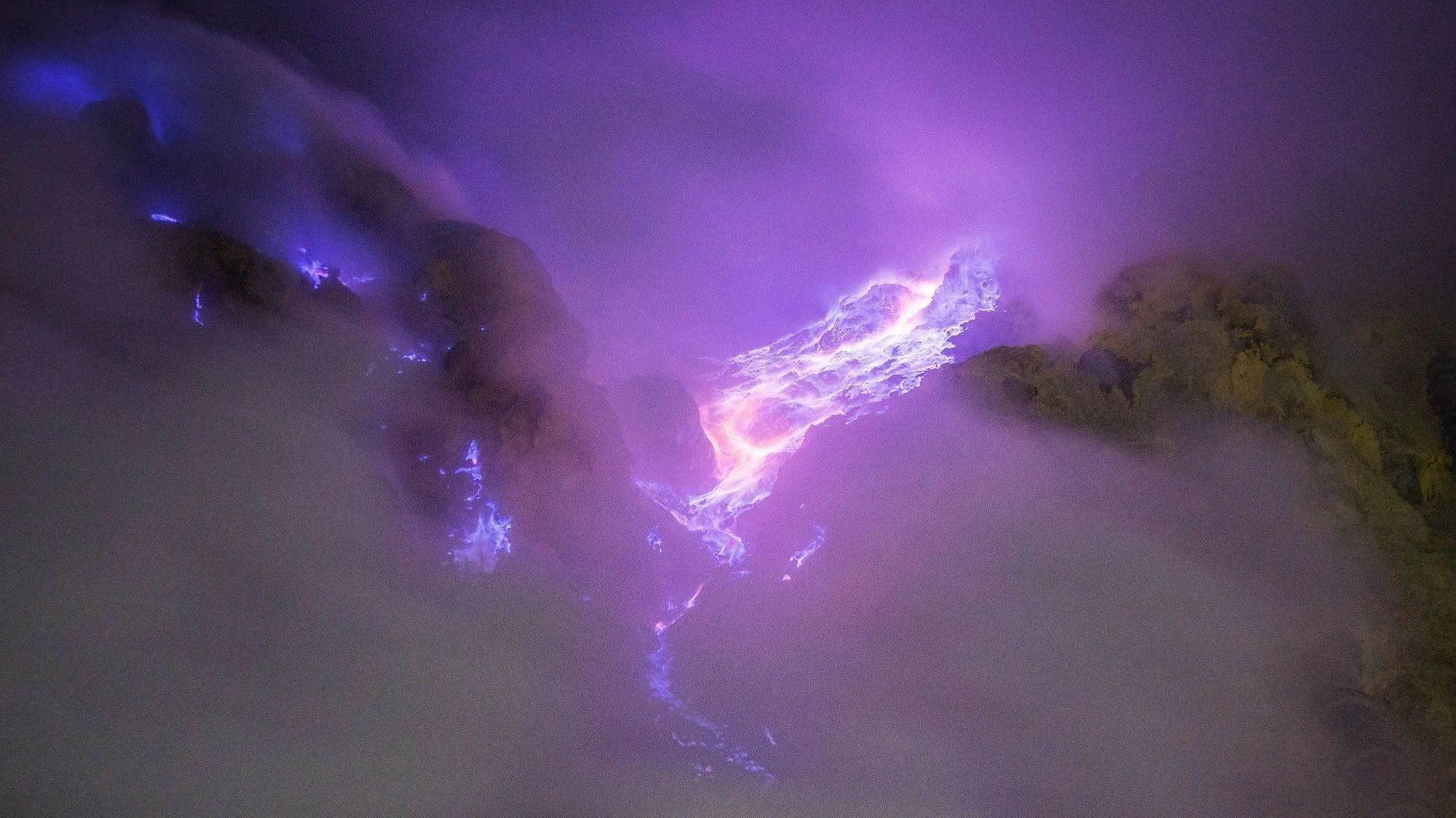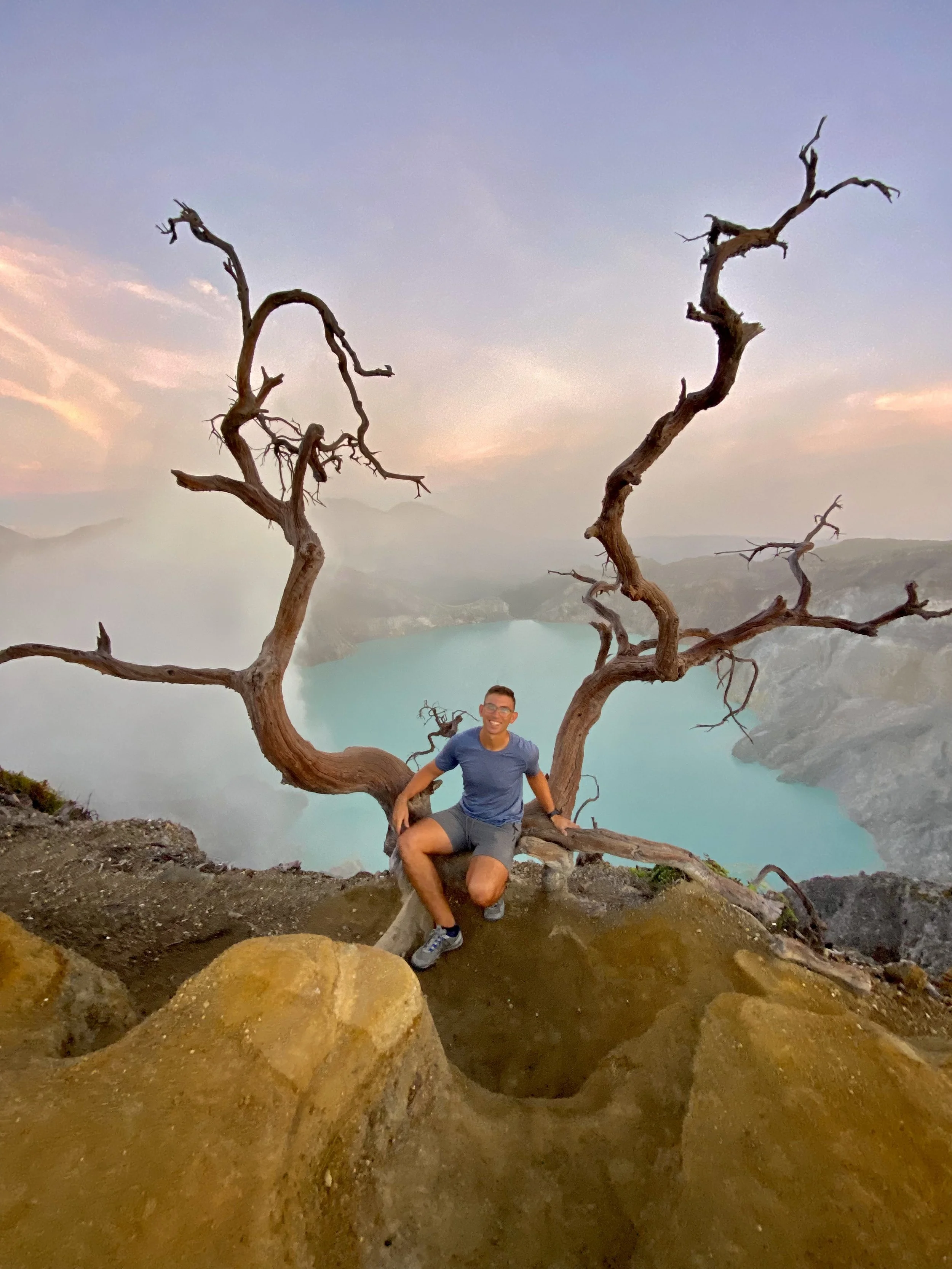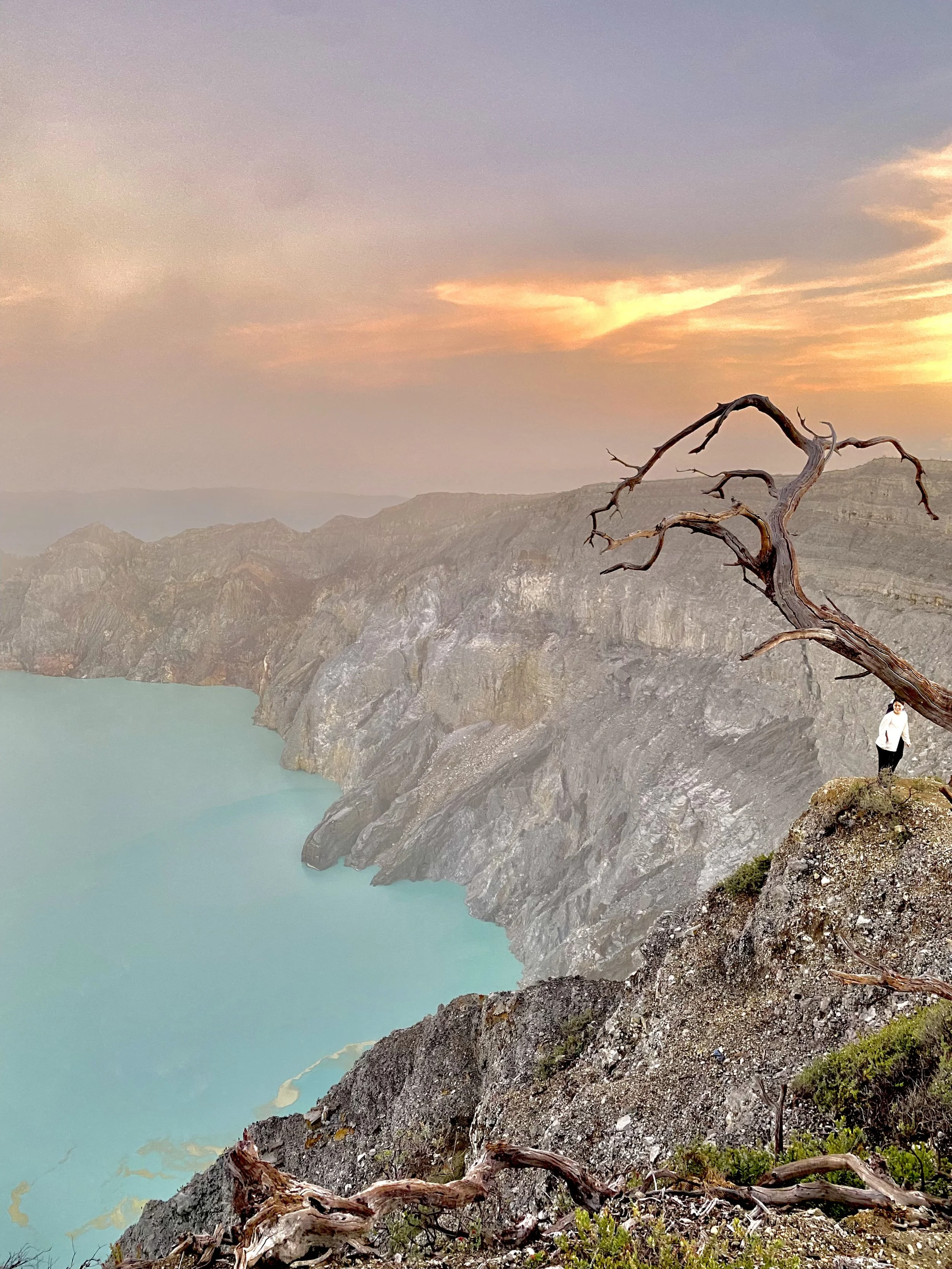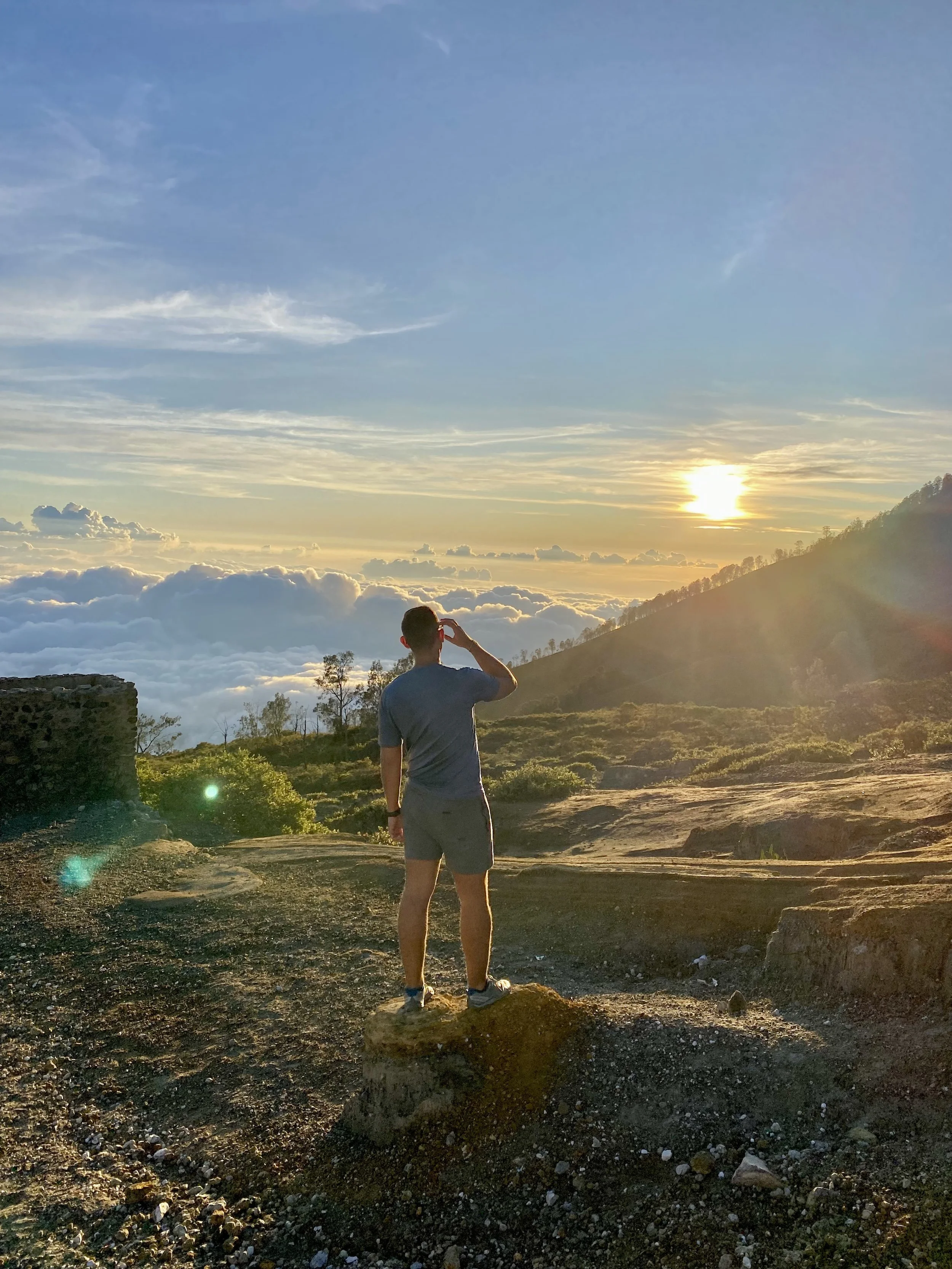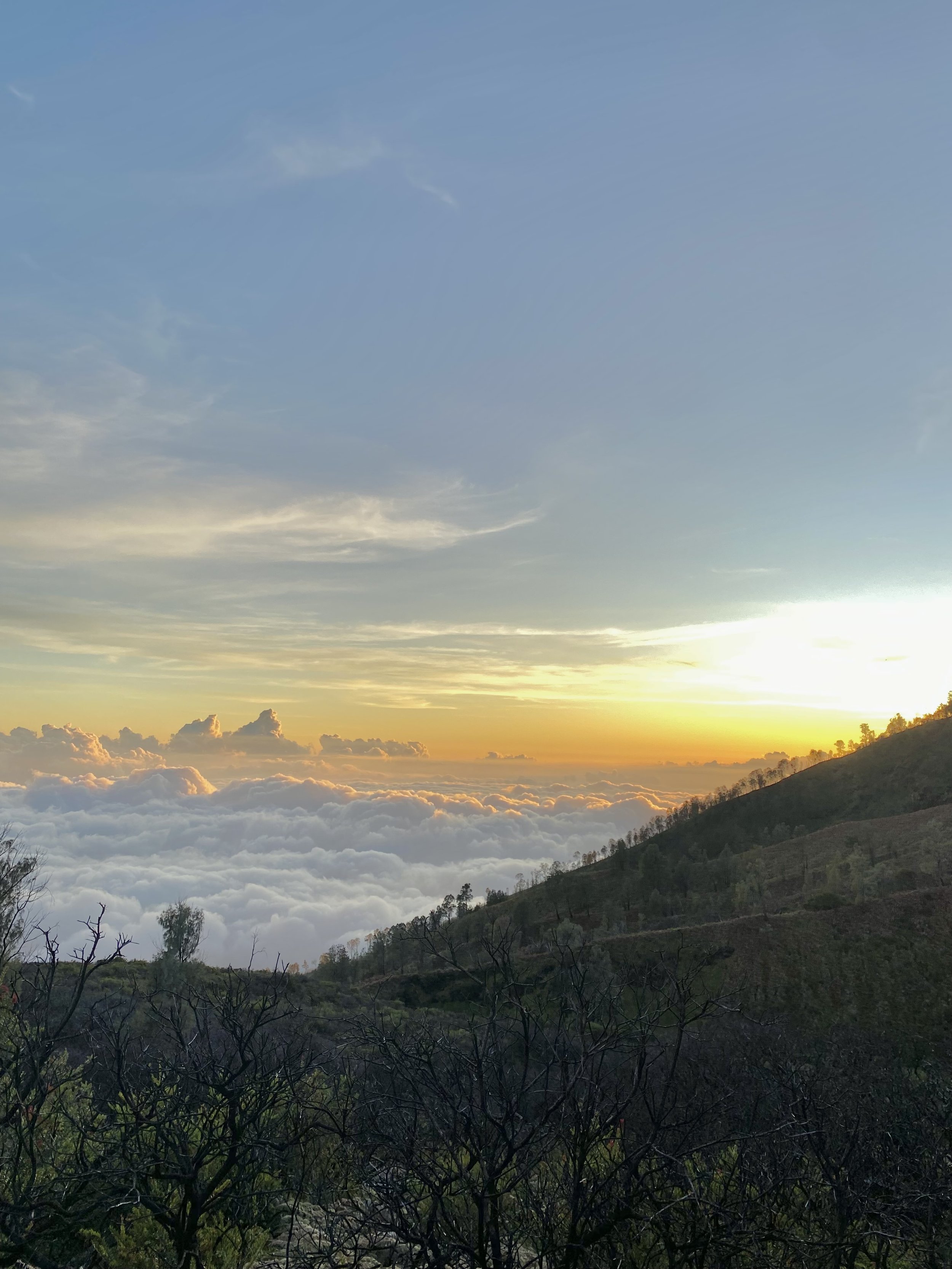Hike Ijen from Banyuwangi
An Easy Base for a Stunning Hike
Hiking Ijen Volcano in East Java is one of the most beautiful nature experiences in Indonesia. At its peak, you’ll walk around an expansive caldera that plummets into a bright blue acidic crater lake. If you’re fortunate, you can witness the volcano complex’s blue fire - a sulfur phenomenon only visible in two places in the world - and catch a wild sunrise from above the clouds. The whole experience is breathtaking.
My recommendation is to base yourself in Banyuwangi - the nearest major town. If you stay at a hostel (Ijen Backpackers was great), the owners will be able to help you to sign up for a hiking tour. I recommend joining a tour instead of doing it on your own because you’ll have to leave Banyuwangi by 2AM to catch the best sites - and the driving path is a bit tough, especially at that hour. You don’t have to hike alongside the others in your group if you don’t want to as much of the path will be quiet in the wee hours, especially if you’re a fast hiker. Also, if you sign up for a tour, your guide will most likely be a former sulfur miner, so you’ll learn about the incredibly labor intensive sulfur mining industry in the volcano that sustains some of the local economy. It’s incredible - and heart-wrenching because the labor conditions are terrible.
The hike is moderately difficult, especially if you’re going down into the crater, but should be achievable for anyone with a moderate baseline fitness. To me, the hardest part was the early morning start. If you’re hiking down to the crater, you will also have to wear a gas mask (which will be provided by the tour).
Most tourists only stay one night in Banyuwangi. They arrive by ferry, shuttle, bus, or train the day before the hike and then leave by train, shuttle, bus, or ferry immediately after. There’s not a lot to do in the town, so if you’re OK with that pace of travel, you won’t miss anything making it a one day stop to do just the hike. Many tourists pair Mount Bromo and Mount Ijen on back to back one-day trips en route to Malang if they’re moving west, or to Bali if they’re moving east. Transit can be a bit frustrating to book alone in this area, but if you stay at a hostel, the owners should be able to help you out and make it easy.
Witness Blue Fire
Your hike will start with an alpine start - no later that 4AM - and you’ll hike uphill for about an hour to an hour and a half before you reach the outskirts of the caldera. If the crater is open to the public (which it wasn’t when I was there because of recent activity), your hike will then go down the crater to see the blue fire (and then back up to get the sunset). The crater hike will take about 45 minutes in each direction. If the crater is not open, you’ll head directly to the caldera sunrise viewpoint.
At around 5AM, at the bottom of the crater, the burning off of sulfur gas at almost 1,200 degrees (Fahrenheit) creates a unique phenomenon only visible in two places in the world - an intense blue flame gas that can look like lava in the air.
Walk Around the Caldera
Once you’ve reached the crater (and finished the crater hike if it’s open), you will then walk around the wide caldera surrounding the acidic sulfur lake. The views are absolutely incredible - some of my favorite hiking views anywhere.
Enjoy a Sunrise
On the eastern most side of the Caldera, the sunrise is incredible. If you position yourself well, you’ll be able to turn to your right and watch the sun rising over the clouds, and then turn left and catch the vibrant morning hues over the Ijen Crater. It is awe-inducing.
Once you’ve been along the caldera for a couple of hours enjoying the views, your tour group will head back down the hiking trail, and you will likely be dropped off back at your hostel by 11AM. Most tourists then catch a train or shuttle immediately to their next destination, usually Bromo or Bali, choosing to sleep en route.

